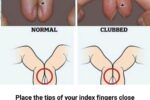The Truth About Squirting, According to Science 💧🔬

Squirting — also known as female ejaculation — is a topic surrounded by curiosity, myths, and a lot of misinformation. So what really happens during squirting? Is it pee? Is it real? Let’s break it down based on what science says.
What Is Squirting, Exactly?
Squirting refers to the release of fluid from the female urethra during sexual arousal or orgasm. It’s often accompanied by intense pleasure, but not always. The amount of fluid can vary — some women may release a small trickle, others a gush.
Is It the Same as Female Ejaculation? 🤔
Not quite. Scientifically, female ejaculation and squirting are slightly different:
- Female ejaculation: Usually a small amount of thick, milky fluid released from the Skene’s glands (sometimes called the female prostate).
- Squirting: Typically a larger amount of clear fluid, which studies show is primarily diluted urine mixed with other substances like prostate-specific antigen (PSA), similar to male semen.
So… Is It Pee? 🚻
Partly, yes. MRI and lab studies have shown that the bladder fills before squirting and empties afterward — indicating that squirting fluid comes mostly from the bladder. However, it’s not just urine. It often contains traces of enzymes from the Skene’s glands, suggesting a combination of bodily fluids.
Is It Normal? Absolutely.
Squirting is completely natural — though not every woman experiences it. Some women squirt often, others never do, and that’s okay. It’s not a measure of sexual satisfaction or orgasm quality.
Can You Learn to Squirt?
Many people can stimulate squirting through:
- G-spot stimulation (inside the front wall of the vagina)
- Deep relaxation
- Strong arousal and hydration
But it shouldn’t be forced. Pressure or trying too hard can make it less enjoyable.
Final Word 💬
Squirting is real, normal, and varies from person to person. Whether it happens or not, what matters most is comfort, consent, and pleasure. Don’t fall for myths — focus on what feels right for you.






